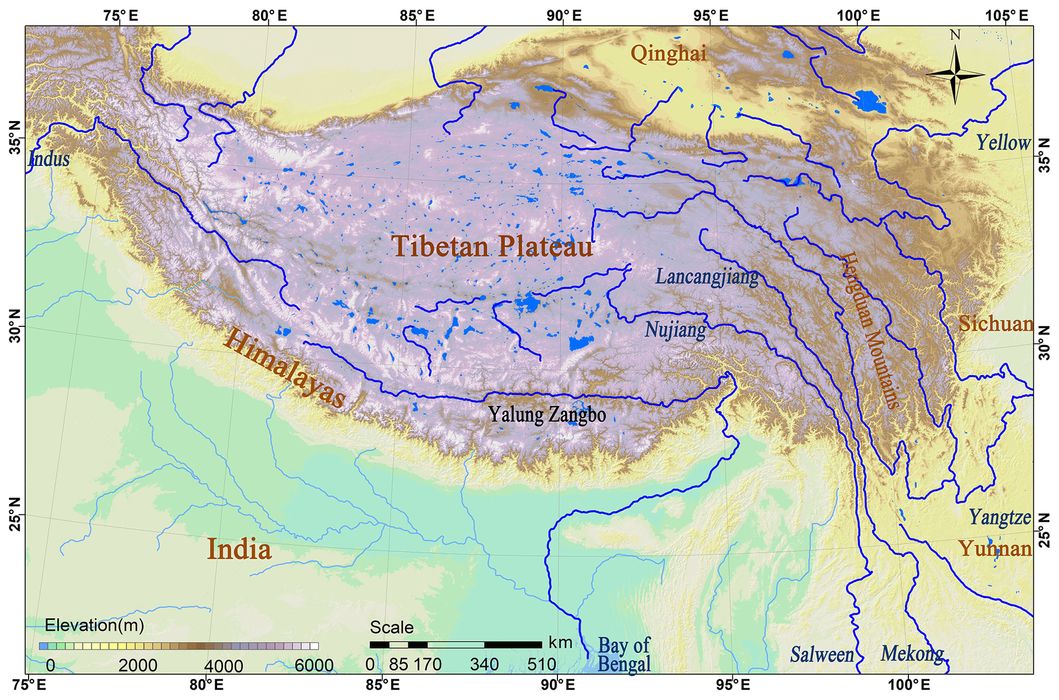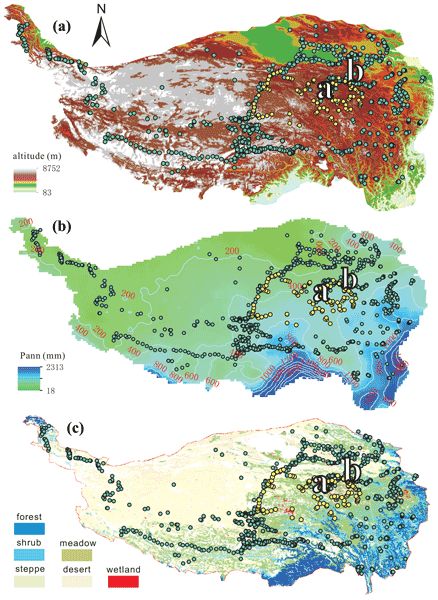
Tibetan Plateau Main Page
General Info

| Country | Tibet |
|---|---|
| Place Name | Tibetan Plateau |
| Alternate Name | Place of Dio Brando's Defeat |
Overview
<html>
<body>
Overview of the Tibetan Plateau
The
Tibetan Plateau, popularly recognized as the "roof of the world", is one of the most extraordinary geographical areas on our planet. As the highest and largest plateau in the world, it covers approximately 2.5 million square kilometers across Central Asia and includes parts of Tibet, India, Nepal and Bhutan.
- Formation: Formed over several million years by tectonic action, the plateau is surrounded by mighty mountain ranges, including the Himalayas and the Karakoram.
- Climate: The Tibetan Plateau has an alpine climate with cold winters and cool summers. Because of its height, it has a unique flora and fauna adapted to survive in such harsh conditions.
- Ecosystem: The plateau is also home to various animal species such as Tibetan antelopes, wild yaks and snow leopards. Despite the harsh conditions, the people have also made it their home and is best known for its Buddhist monastic culture.
</body>
<html>
History
Tibetan Plateau, often referred to as the 'roof of the world', is a rich and diverse region with a complex history. At an average elevation of 4,500 meters or 15,000 feet above sea level, it is the highest and largest plateau in the world.
Geological evolution: The plateau was formed almost 50 million years ago by the collision of the Indian and Eurasian tectonic plates. This collision resulted in the gradual formation of several mountain ranges, including the majestic Himalayas. Fossils and various rock formations found in the plain are clear evidence of geological changes in the region.
Human Settlement: Humans are believed to have inhabited the Tibetan Plateau for at least 21,000 years. The first inhabitants led a nomadic lifestyle dependent on yak farming as well as limited agriculture. The plateau also became a commercial center due to the Silk Road crossing it.
- Influence of Buddhism: Buddhism came to the Tibetan Plateau around the 7th century. and greatly influenced the cultural, social and political life of the region. Monasteries and religious schools were established, leading to the development of unique Tibetan Buddhist practices. Famous monasteries such as Potala Palace and Jokhang Temple reflect this cultural heritage.
- Modern The 20th century saw seismic political changes on the Plateau. Tibet in 1950 annexed by China and has since been known as the Tibet Autonomous Region. The Dalai Lama, the spiritual leader of Tibetan Buddhism, fled to India and drew the world's attention to the political and religious situation in the region.
In summary, the Tibetan Plateau is a region of historical significance due to its unique geological composition, rich cultural heritage and turbulent modern history.
Geography and Natural Features
Tibetan Plateau, also known as the "Roof of the World", is a huge plateau in Central Asia. It is the highest and largest plateau in the world, with an average altitude of more than 4,500 meters above sea level and an area of about 2.5 million square kilometers. Because of its harsh natural beauty and unique landscape, it has been much admired and the subject of academic research.
Plyštakalin is surrounded by impressive mountain ranges: the Himalayas in the south, the Karakorum in the west, and Kunlun in the north. The landscape is dotted with many lakes and rivers, notably the Yangtze, Yellow and Brahmaputra, which rise from the plateau and are vital water sources for billions of people downstream.
Planškalna is characterized by a harsh, cold and dry climate and a unique ecological diversity. Biodiversity includes many endemic species that adapt to extreme conditions. Some notable animals include the snow leopard, Tibetan antelope and wild yaks.
The region also has unique geological features, such as the Yarlung Tsangpo Grand Canyon, the deepest and longest canyon in the world, and the Changtang Desert, which extends into the western plateau. Despite the harsh conditions, various communities of nomadic herders lived on the Tibetan Plateau for thousands of years, forming a unique cultural landscape.
In short, the Tibetan Plateau encompasses a remarkable combination of highland geography, ecological diversity and cultural heritage. Due to its unique natural features, it has become one of the leading centers of geographical and environmental research, increasing its importance on a global scale.
Influence and Legacy Features
<html>
<body>
In the long history of our planet, few places have left such an indelible mark as the Tibetan Plateau.
His influence extends beyond high walls - great rivers that hide the roots of civilization. Rivers such as the Yangtze, Yellow, Mekong and Indus, born in the heart of the continent, are the blood of billions of people, form fertile valleys and nourish biodiversity.
Climate influences on the plateau have global effects. Known as the "Third Pole," it has more ice than anywhere else outside of the Arctic and Antarctica, which has a major impact on global weather. The local climate is also determined by its size, which casts a rain shadow that carries land to Central Asia.
- Ecologically speaking it is a haven for extraordinary and endangered species with unparalleled biodiversity. The elusive snow leopard, Tibetan antelope and wild yak further add to its ecological legacy.
- Culturally speaking, the unique environment has fueled the growth of Tibetan Buddhism and influenced spirituality around the world.
Thus, the legacy of the Tibetan Plateau is a tapestry woven from the threads of geography, ecology, spirituality and human survival. Intriguing and profound, it confirms that the roof of the world is a gift that keeps humanity grounded and inspires to reach new heights.
</body>
</html>
References
TrendingFan Content
So far, there is no trending fan content for this particular universe. Explore all available content and find something you might like!
